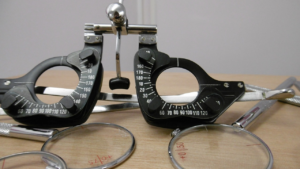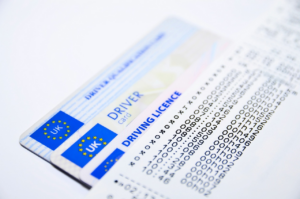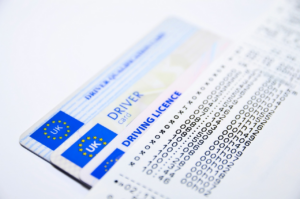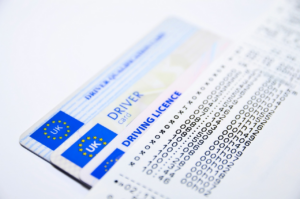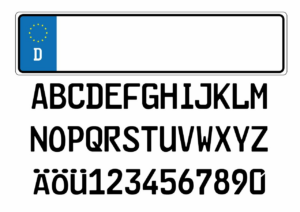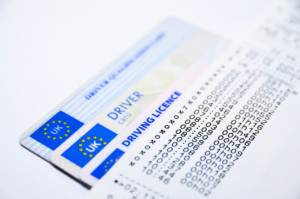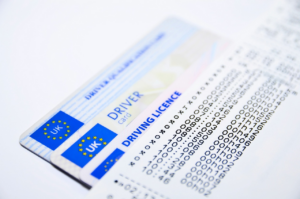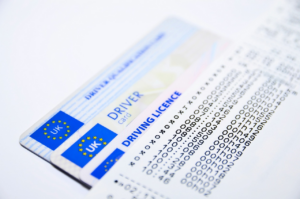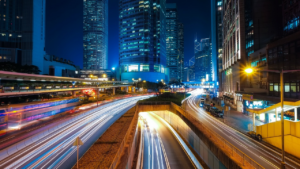As a resident of the UK, you have two primary options for getting around: owning a UK driving licence or using public transportation. Each option has its advantages and disadvantages, and making the right decision requires careful consideration of your lifestyle, budget, and values.
In this article, we will explore the pros and cons of owning a UK driving licence versus using public transportation, so you can make an informed decision that works best for you.
Owning a UK driving licence offers convenience and flexibility that public transportation cannot match. With a car, you have the freedom to go wherever you want, whenever you want, without having to worry about schedules or routes. You can take a spontaneous road trip, run errands on your own time, and easily transport bulky items.
However, owning a car also comes with significant costs, including the purchase price, insurance, fuel, maintenance, and repairs. Additionally, driving can be stressful, especially in crowded areas with heavy traffic.
On the other hand, using public transportation is typically cheaper and more environmentally friendly, but it may not be as convenient or comfortable as owning a car. By weighing the pros and cons of each option, you can determine which is the best fit for your lifestyle and needs.
Convenience and Flexibility of Owning a UK Driving Licence
If you want the freedom to go wherever and whenever you want, having a UK driving licence is the way to go. You can easily hop into your car and travel to any destination without having to worry about the schedules of public transportation. With a driving licence, you can take spontaneous trips, visit remote locations, and enjoy the scenic routes that public transportation doesn’t offer.
You can also easily transport your belongings, save time on travel, and have control over your own transportation. Having a driving licence also gives you the flexibility to plan your schedule around your own time. You don’t have to worry about missing the last bus or train home, or waiting for a ride to pick you up.
You can also avoid the hassle of carrying heavy bags or luggage around, as you can always store them in your car. Owning a driving licence also allows you to take multiple stops on your journey, without being restricted by the schedules of public transportation. Overall, owning a UK driving licence provides the ultimate convenience and flexibility for your transportation needs.
Cost of Owning and Maintaining a Car
If you’re considering owning a car, it’s important to understand the costs associated with purchasing and maintaining it. This includes expenses such as buying the car itself, paying for fuel, insurance, and maintenance.
The costs can vary depending on the make and model of the car, as well as your driving habits and location. It’s essential to factor in these expenses when making the decision to own a car.
Expenses Associated with Purchasing a Car
Buying a car can be a significant financial commitment, with expenses such as insurance, maintenance, and fuel costs adding up over time.
When purchasing a car, you need to factor in the initial cost of the vehicle, which could range from a few thousand pounds to tens of thousands depending on the make, model, and age of the car. You also need to consider the cost of insurance, which varies based on your driving record, age, and the car you drive.
Newer and more expensive cars typically have higher insurance premiums. In addition to insurance, you need to factor in maintenance costs such as oil changes, tyre replacements, and brake repairs. These costs can add up quickly and are necessary to keep your car running smoothly and safely.
Fuel costs are another expense you need to consider, especially if you plan on driving long distances or have a long commute. With all these expenses to consider, it’s important to carefully assess your budget and determine if owning a car is a financially viable option for you.
Costs of Fuel, Insurance, and Maintenance
You’ll need to factor in the ongoing costs of fuel, insurance, and maintenance when you purchase a car, as these expenses can quickly add up over time.
Fuel costs will depend on how often and how far you drive, as well as the current price of gas.
You’ll also need to purchase car insurance, which can vary depending on your age, driving history, and the type of car you have.
Additionally, you’ll need to regularly maintain your car, including oil changes, tire rotations, and other repairs that may be necessary.
It’s important to budget for these expenses when considering whether to own a car or rely on public transportation.
While the upfront cost of purchasing a car may seem high, the ongoing costs can be significant as well.
However, owning a car also provides more flexibility and independence in terms of transportation.
Ultimately, it’s up to you to weigh the pros and cons and decide what works best for your lifestyle and budget.
Environmental Impact of Owning a Car
Driving a car contributes significantly to air pollution and carbon emissions, which has a negative impact on the environment. When you own a car, you’re responsible for its emissions and environmental impact.
Cars emit harmful pollutants like nitrogen oxide and carbon monoxide, which can cause respiratory problems and contribute to climate change. The environmental impact of owning a car goes beyond just emissions, as cars also require significant amounts of resources to manufacture and maintain.
Consider the following bullet points to better understand the environmental impact of owning a car:
- Cars contribute to climate change by emitting greenhouse gases like carbon dioxide.
- Production of cars requires large amounts of energy and resources, including oil, steel, and other materials.
- Disposal of old cars can also be harmful to the environment, as cars contain toxic materials like lead and mercury.
Considering the impact that cars have on the environment, it’s important to weigh the pros and cons of owning a car versus using public transportation. While cars offer convenience and flexibility, they also come with significant environmental responsibility.
Stress of Navigating Through Traffic
When you’re navigating through traffic, dealing with congestion and road rage can be a major source of stress.
The frustration of being stuck in bumper-to-bumper traffic, coupled with the aggressive behavior of other drivers, can make even the calmest person feel on edge.
And once you finally arrive at your destination, finding a parking space can add another layer of anxiety to the experience.
Adjusting the paragraph structure in the input to logically group complete sentences on their own lines, with a double new line after, makes the text easier to read and understand.
Using contractions also helps to create a more natural and conversational tone.
Dealing with Congestion and Road Rage
Navigating through traffic and dealing with angry drivers on the road can be a stressful experience. It’s no secret that driving in congested areas can be frustrating and time-consuming.
You may find yourself stuck in bumper-to-bumper traffic for hours on end, feeling like you’re not making any progress. Meanwhile, other drivers may be honking their horns, cutting you off, or tailgating you, making the experience even more nerve-wracking.
One of the downsides of owning a car is that you have to deal with these types of situations on a regular basis. However, it’s important to keep in mind that road rage can be dangerous and even deadly.
If someone else’s aggressive driving is making you feel unsafe, it’s best to stay calm and avoid engaging with them. Remember that your safety is the most important thing.
Finding Parking Spaces
Looking for a spot to park your car can be a real headache, but there are some tips and tricks that can make the process a little less stressful. Here are some things you can do to find a parking space more easily:
- Look for parking apps or websites that can help you find available spots in your area.
- Consider parking further away from your destination and walking a little bit to save time and avoid the stress of finding a spot closer to your destination.
- Try to avoid peak hours when parking is more difficult to find. If you can, plan your trips during off-peak hours.
It’s important to remember that owning a driving license and a car means you have the responsibility of finding a parking space. Public transportation, on the other hand, takes away the stress of finding a parking spot altogether. However, if you do choose to drive, using these tips can make the process a little easier.
Advantages of Using Public Transportation
Taking public transportation can be a convenient and cost-effective way to get around town. Instead of worrying about finding a parking space or dealing with the stress of traffic, you can sit back and relax while someone else does the driving.
Public transportation also allows you to be more productive during your commute. You can catch up on work, read a book, or simply enjoy the scenery.
Another advantage of using public transportation is the environmental impact. By taking the bus or train, you’re reducing your carbon footprint and contributing to a healthier planet. Public transportation also helps to reduce traffic congestion and air pollution, making it a more sustainable option for getting around.
Using public transportation can also save you money on gas, car maintenance, and parking fees, which can add up over time.
Overall, there are many benefits to using public transportation instead of owning a UK driving licence. Public transportation can be a great choice for those looking for a convenient and sustainable way to get around town.
Disadvantages of Public Transportation
You may have experienced some drawbacks when relying solely on public transportation. Here are some common disadvantages that you may come across:
-
Limited schedule: Public transportation runs on a set schedule, which means that you have to adjust your plans accordingly. If you miss your bus or train, you may have to wait for the next one, which can be time-consuming and frustrating.
-
Crowdedness: Public transportation can get crowded, especially during rush hour. You may have to stand for long periods of time, and it can be difficult to find a comfortable spot to sit.
-
Limited routes: Public transportation may not go to all the places that you need to go. You may have to walk or take a taxi to get to your final destination, which can be inconvenient and costly.
-
Safety concerns: Public transportation may not always be the safest option, especially if you’re traveling alone at night. There’s a risk of theft, harassment, or even physical harm.
While public transportation can be a convenient option for some, it may not be the best choice for everyone. Owning a UK driving license can give you more flexibility and freedom to go where you need to go, without having to rely on public transportation.
Safety Concerns
When it comes to getting around, safety is a top concern that can’t be overlooked.
Public transportation brings with it a number of risks, such as accidents and crime. For example, when riding on a bus or train, there’s always a chance that the vehicle could crash or collide with another object. Additionally, crowded public transportation can increase the likelihood of theft or other types of crime.
On the other hand, owning a UK driving licence also has its safety risks. While driving can be convenient and efficient, it also requires a lot of responsibility. Drivers must be alert at all times and avoid distractions such as texting or eating while driving. Moreover, driving in unfamiliar areas or during bad weather conditions can be dangerous.
It’s important to weigh the pros and cons of owning a driving licence and using public transportation to determine which option is best for you and your safety needs.
Making an Informed Decision
When it comes to deciding whether to obtain a UK driving licence or rely on public transportation, it’s important to consider your personal needs and lifestyle.
Think about your daily routine and how each option would fit into it. Additionally, weigh the pros and cons of each option, such as cost, convenience, and environmental impact.
By taking these factors into account, you can make an informed decision that works best for you.
Considering Personal Needs and Lifestyle
If you’re someone who values flexibility and independence, having a driving licence might suit your lifestyle better than relying on public transportation. Owning a car means that you can travel wherever you want, whenever you want, without having to worry about bus or train schedules.
You have the freedom to make spontaneous plans and can easily access remote locations that are not served by public transport. This can be particularly convenient if you have to commute long distances or travel frequently for work or leisure.
On the other hand, owning a car comes with its own set of challenges and costs. You need to invest in purchasing a car, pay for fuel and maintenance, and also incur other expenses such as insurance and parking fees.
Additionally, driving a car can be stressful, especially in traffic or adverse weather conditions. It also requires a certain level of skill and responsibility to ensure your safety and that of other road users.
Ultimately, the decision to own a driving licence or rely on public transportation depends on your personal needs, budget, and lifestyle.
Weighing the Pros and Cons of Each Option
You may be wondering which option is better for you – owning a UK driving licence or using public transportation. Let’s weigh the pros and cons of each option.
Owning a UK driving licence gives you the freedom to travel at your own pace and convenience. You can go anywhere, anytime without worrying about missing a bus or train. You don’t have to wait in line or deal with crowds. You can also carry more luggage or groceries without worrying about space or weight restrictions. Moreover, having a driving licence is valuable for job prospects and can open up more opportunities for you.
However, owning a car comes with a lot of responsibilities. You have to pay for fuel, maintenance, insurance, and parking. You also have to deal with traffic, road hazards, and accidents. Driving can also be stressful, especially during rush hours or bad weather conditions. Moreover, owning a car contributes to air pollution and traffic congestion, which can harm the environment and society.
On the other hand, using public transportation has its own advantages and disadvantages. You can save money on fuel, maintenance, and parking costs. You can also relax, read, or work while commuting, which can save you time and reduce stress. You can also reduce your carbon footprint and contribute to a cleaner environment.
However, using public transportation can be inconvenient and unreliable. You have to follow schedules and routes, which may not fit your needs or preferences. You also have to deal with crowds, delays, and cancellations, which can be frustrating and time-consuming. Moreover, using public transportation can limit your mobility and flexibility. You may not be able to travel to remote or rural areas, or to places that are not covered by the network.
Therefore, it’s important to weigh the pros and cons of each option and choose the one that suits your needs and lifestyle.
Frequently Asked Questions
What are the legal requirements for obtaining a UK driving licence?
To obtain a UK driving licence, you must first meet the legal requirements set by the Driver and Vehicle Licensing Agency (DVLA). You must be at least 17 years old and have a valid UK passport or another form of identification. You must pass a medical exam, as well as both a theory and practical driving test.
The theory test assesses your knowledge of the Highway Code, road signs, and hazard perception. The practical test assesses your ability to operate a vehicle safely and efficiently on the road.
After passing both tests, you’ll receive a full UK driving licence. This allows you to legally operate a motor vehicle on UK roads.
How does the cost of owning a car compare to the cost of using public transportation over time?
When it comes to the cost of transportation, owning a car can be significantly more expensive than using public transportation.
While the initial cost of purchasing a car may be higher than buying a bus or train ticket, the ongoing expenses of car ownership can add up quickly.
You’ll need to factor in the cost of petrol, insurance, maintenance, and repairs, all of which can be considerable over time.
Public transportation, on the other hand, offers predictable costs that are typically much lower than the ongoing expenses of car ownership.
While there are certainly benefits to owning a car, it’s important to carefully consider the long-term costs before making a decision.
What impact does owning a car have on air pollution and the environment?
Owning a car can have a significant impact on air pollution and the environment. Cars emit harmful pollutants such as carbon monoxide, nitrogen oxides, and particulate matter which can contribute to respiratory problems and climate change.
Furthermore, the production and disposal of cars also contribute to environmental degradation. However, choosing to own a more fuel-efficient or electric vehicle, carpooling, and reducing unnecessary driving can all help to mitigate these negative impacts.
Ultimately, it’s important to weigh the benefits and drawbacks of owning a car and consider alternative modes of transportation to minimize your impact on the environment.
How can drivers reduce stress and anxiety while navigating through traffic?
You’re stuck in traffic, and your mind is racing. You’re worried about being late, and you feel your stress levels rising. But there are ways to reduce stress and anxiety while navigating through traffic.
First and foremost, take a deep breath and remind yourself that you’re not alone. Millions of people are in the same situation as you are right now.
Secondly, try to remain calm and focused. Avoid distractions such as texting or eating while driving. Instead, listen to calming music or a podcast.
Lastly, plan your route ahead of time and leave early. This will give you extra time to deal with unexpected traffic and arrive at your destination without feeling rushed or stressed.
By following these tips, you can reduce stress and anxiety and enjoy a more peaceful driving experience.
What steps can public transportation providers take to improve safety for passengers?
If you rely on public transportation, you want to feel safe while traveling. To improve passenger safety, transportation providers can take several steps.
First, they should ensure that all vehicles are well-maintained and regularly inspected for safety hazards. Additionally, providers should invest in modern technology such as GPS tracking and security cameras to monitor and respond quickly to any incidents.
It’s also important to provide clear and concise safety guidelines to passengers and to have well-trained staff on board to assist passengers in case of emergency.
Finally, transportation providers should maintain open lines of communication with passengers, encouraging them to report any safety concerns and taking swift action to address them.
By taking these steps, public transportation providers can help ensure that passengers feel safe and secure while traveling.
Conclusion
So, you’ve weighed the pros and cons of owning a UK driving licence versus using public transportation. It’s a tough decision, but ultimately, it comes down to what works best for your lifestyle, budget, and values.
If you prioritize convenience and flexibility, owning a car may be the way to go. However, keep in mind the high cost of ownership and maintenance, as well as the negative impact on the environment. Additionally, navigating through traffic can be a stressful experience.
On the other hand, if you prefer to prioritize cost-effectiveness and environmental sustainability, public transportation might be the better option for you. While there are some disadvantages, such as safety concerns and limited flexibility, using public transportation can save you money and reduce your carbon footprint.
In the end, it’s up to you to make an informed decision based on your individual needs and preferences. Whatever you decide, remember that both options have their advantages and disadvantages, and it’s important to weigh them carefully before making a choice.















